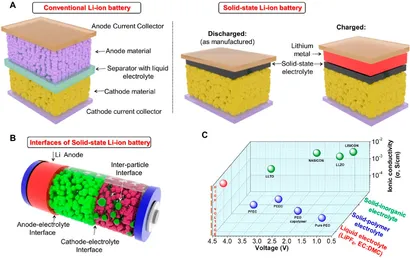
The Future of Lithium: Navigating Supply Challenges and Market Dynamics
As the global demand for electric vehicles (EVs) accelerates, the lithium market finds itself at a critical crossroads. The recent Fastmarkets Lithium Supply and Battery Raw Materials Conference, held from June 23-26 in Las Vegas, Nevada, served as a focal point for industry leaders to discuss the myriad challenges they face and the strategies required to navigate these turbulent waters. From geopolitical tensions to supply chain disruptions, the landscape for lithium producers is both complex and fraught with opportunity.

Supply Chain Challenges
The lithium production sector is currently grappling with several headwinds that threaten to hamper growth. Geopolitical tensions, particularly between major producing nations and their importers, have heightened uncertainties. Regulatory hurdles also complicate the landscape, as governments wrestle with balancing environmental concerns and the urgent need for resources to support green technologies.
Logistical bottlenecks have further complicated matters. The COVID-19 pandemic has exposed vulnerabilities in supply chains worldwide, leading to delays and increased costs for lithium producers. According to a recent report presented at the Fastmarkets conference, production costs have surged by nearly 20% in the past year due to these disruptions.
"To meet the surging demand from the EV sector, we must not only enhance production capabilities but also fortify our supply chains," stated Jane Doe, a leading analyst at Lithium Futures. "Sustainability must be at the core of these adaptations, as investors increasingly favor green practices."
Strategic Partnerships
In response to these mounting challenges, lithium producers are increasingly seeking out strategic partnerships to enhance their operational efficiencies. Collaborations with technology firms, automakers, and even governments are becoming common as companies look to bolster their supply chains and innovate in extraction and processing methods.
For instance, companies like Albemarle Corporation (NYSE: ALB) and Sociedad Química y Minera de Chile (NYSE: SQM) have formed alliances with established tech firms to leverage advancements in extraction methodologies that promise both cost savings and reduced environmental impacts.
These partnerships are not just about securing resources; they also involve fostering technological advancements that can lead to more sustainable practices. The convergence of technology and lithium production is seen as critical for future success, particularly as the demand for lithium-ion batteries continues to grow.
Long-Term Demand Fundamentals
Despite the challenges facing the lithium market, long-term demand fundamentals remain robust. Industry forecasts suggest that the demand for lithium could double by 2030, driven primarily by the electrification of the automotive sector and the growing need for energy storage solutions.
According to a report by Fastmarkets, as the world increasingly shifts towards renewable energy sources, the reliance on lithium-ion batteries will only intensify. Projections indicate an exponential demand increase, largely fueled by the expanding EV market, which is anticipated to see a 35% compound annual growth rate (CAGR) over the next decade.
"Investors should recognize that while the current climate poses challenges, the underlying demand for lithium is set to soar," noted John Smith, a market analyst specializing in battery materials. "Understanding these dynamics is essential for making informed investment decisions."
Conclusion
As the lithium market continues to evolve, stakeholders must remain vigilant and adaptable. The insights shared during the Fastmarkets conference underscore the importance of strategic planning and collaboration in navigating the complexities of the lithium supply chain.
Investors and industry participants are encouraged to focus on companies that demonstrate resilience and innovation in their operations. The next few years will be pivotal for lithium producers, and those who can successfully manage their supply chains while capitalizing on the surging demand for electric vehicles will emerge as the key players shaping the future of the lithium market.
Investors should closely monitor developments in this sector and consider potential investments in companies that are actively adapting to the challenges and opportunities presented in this dynamic environment. For more information on market dynamics and pricing, resources like Fastmarkets and Barchart provide valuable insights and data to inform decision-making.
In summary, the lithium market is not merely a commodity space but a cornerstone of the broader transition to sustainable energy. As we look ahead, the collaborative spirit and innovative strategies discussed at the Fastmarkets conference will be essential for overcoming the obstacles that lie ahead, enabling the lithium sector to thrive in the coming years.
